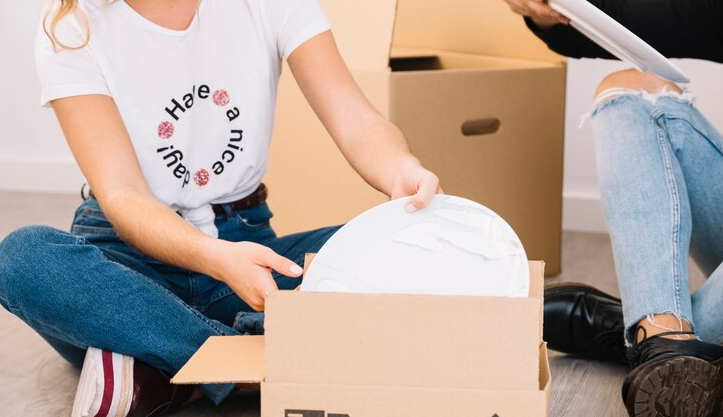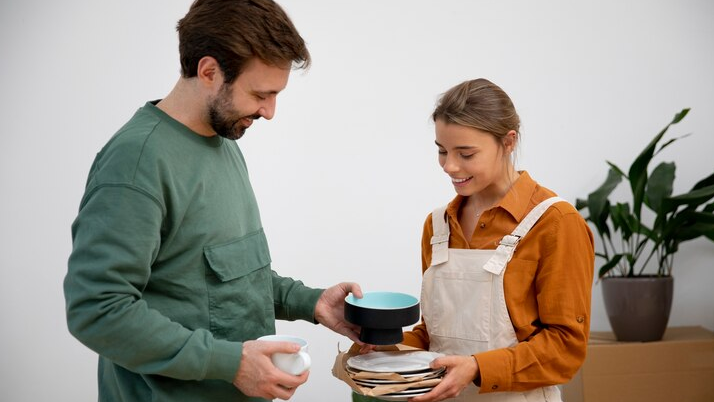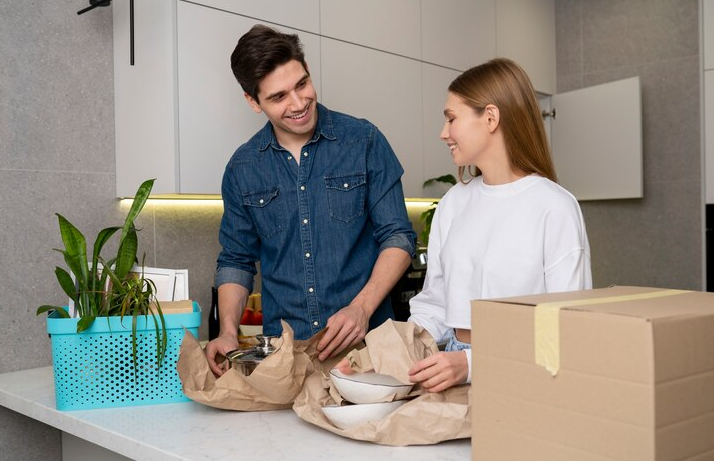Packing your kitchen for a move can feel overwhelming. From fragile dishes and awkwardly shaped gadgets to sharp knives and heavy cookware, kitchen items are often delicate and require extra attention. However, with the right strategy, you can protect your kitchen essentials and ensure they are safe and easy to unpack.
In this guide, we’ll walk you through the best way to pack kitchen items, providing professional insights to help make your move smoother. Whether you’re moving into a new home or relocating your office, these tips will help keep your kitchen items organized and protected.
Why Proper Kitchen Packing Matters

Improperly packed kitchen items can lead to costly breakages and additional stress. Whether its dishes or small appliances, the key to a smooth move lies in ensuring each item is packed properly. By taking a methodical approach to packing, you minimize the chances of breakage, reduce stress, and make your unpacking process faster and easier.
Essential Packing Materials and Tools
Using the right materials for each item is critical. Here’s a breakdown of the essential packing materials:
- Sturdy Moving Boxes: Use various box sizes, including dish barrel boxes for fragile items like fine China and glasses.
- Bubble Wrap and Packing Paper: These materials cushion delicate items, including electronics and appliances.
- Packing Tape: Secure your boxes with high-quality tape to avoid mishaps during transport.
- Markers: Label your boxes clearly to avoid confusion.
- Specialty Dividers: Perfect for organizing fragile items like glasses and plates inside boxes.

Pre-Packing Tips: Declutter and Organize
Before you start packing, take the time to declutter your kitchen. Sort through your items and donate or discard anything you don’t need. This will not only save you time but also ensure that only essential items are packed.
- Group Items by Category: Sort your kitchenware into categories—dishes, utensils, cookware, and small appliances.
- Take Inventory: Keep track of your items, especially valuable or frequently used ones.
- Label Everything: Label each box for easy identification during the unpacking process.
How to Pack Plates, Bowls, and Glassware
Packing fragile items like plates and glassware requires extra care. Here’s how to protect them:
- Wrap Each Item Individually: Use packing paper or bubble wrap to prevent breakage.
- Layer Items Carefully: Place heavier items at the bottom of the box, with lighter ones on top.
- Use Dividers: Dish dividers will keep plates and glassware separated to prevent chipping.
- Cushioning: Crumpled packing paper at the bottom and top of the box offers extra protection.
How to Pack Pots, Pans, and Cookware
Cookware is generally less fragile but still needs proper packing to avoid damage:
- Nest Pots and Pans: Stack smaller pots inside larger ones, separated with packing paper.
- Wrap Lids Separately: Pack lids separately and label them with the corresponding cookware.
- Cast-Iron Cookware: Wrap these in additional layers of padding to prevent chipping.
How to Pack Utensils, Knives, and Flatware
When packing sharp items like knives, safety is crucial:
- Bundle Flatware: Group utensils together, securing them with rubber bands and wrapping them in paper.
- Safely Pack Knives: Cover knife blades with protective covers or rolled paper and label boxes as “Sharp” for safety.
- Organize and Label: Properly label each utensil box for easy unpacking.
How to Pack Small Kitchen Appliances
Protect your small appliances, such as blenders and coffee makers, with these tips:
- Clean and Dry: Ensure all appliances are clean and dry to avoid mildew during transport.
- Remove Detachable Parts: Wrap and pack these separately to avoid damage.
- Cushioning: Use bubble wrap or packing paper to cushion appliances and prevent shifting in the box.
Packing Pantry Items and Spices
When packing pantry items, prevent spills and keep things organized:
- Sort by Expiration Date: Get rid of expired or leaking items.
- Seal Packages: Use airtight containers or Ziploc bags for open packages.
- Pack Liquids Securely: Ensure liquids are in leak-proof containers and place them upright in boxes.
Common Mistakes to Avoid
Here are some packing mistakes to watch out for:
- Overloading Boxes: Keep boxes manageable.
- Mixing Fragile and Heavy Items: Pack fragile items separately.
- Leaving Packing to the Last Minute: Rushed packing leads to breakage.
Packing your kitchen items carefully is essential for a smooth and safe move, and following these expert tips will ensure your kitchen essentials make it to your new home intact. However, packing up a kitchen can still be a time-consuming and challenging task. That’s where Movers Not Shakers, your trusted moving company in New York, comes in! We specialize in hassle-free moving services, offering professional packing and handling of all your kitchen items, so you can focus on what truly matters. Whether you’re moving locally or across the state, let our experienced team ensure your move is efficient and stress-free. Get in touch with us for a customized moving plan that fits your needs!
